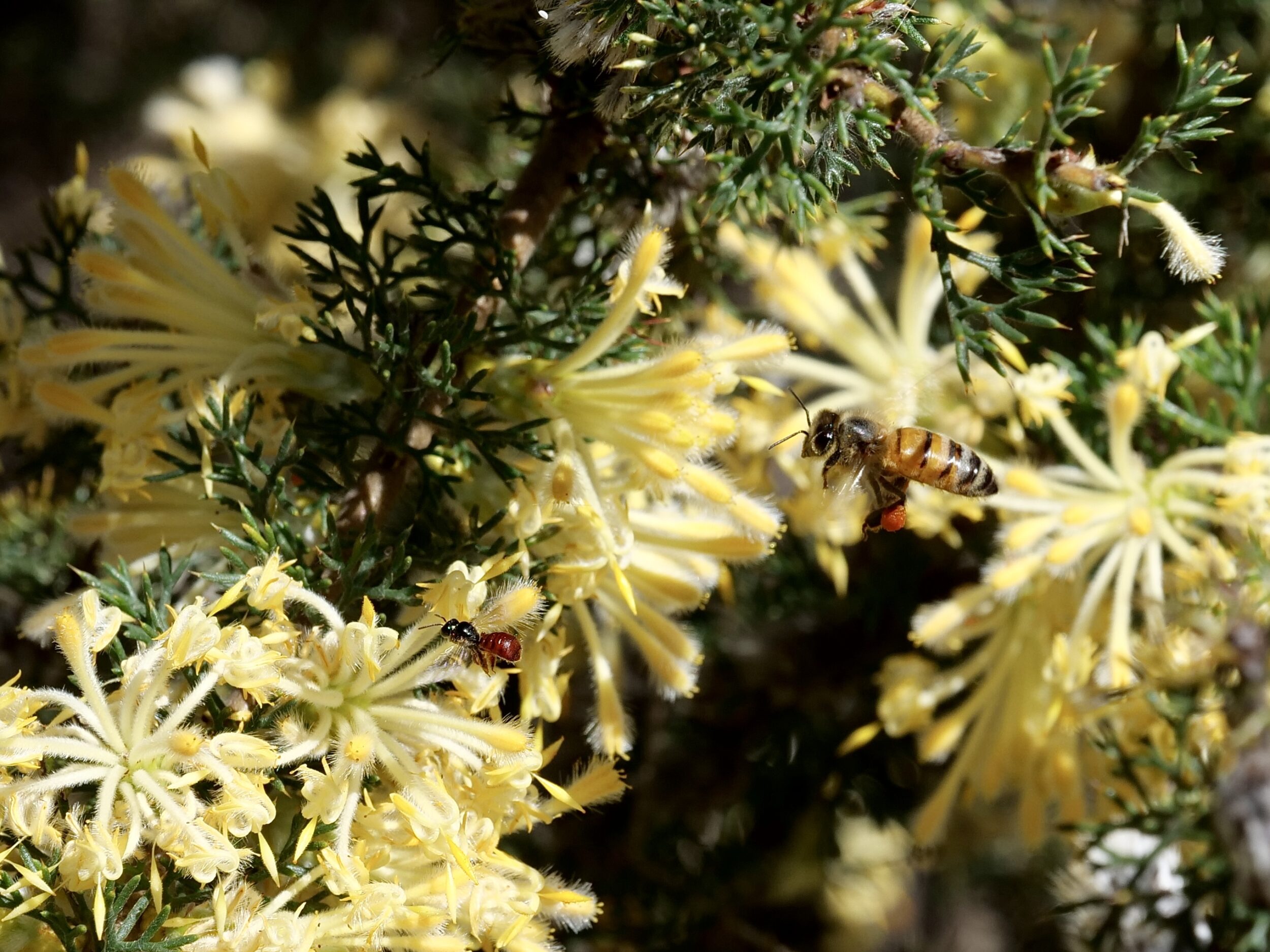Generally, when Australian humans think of bees, they are thinking of Apis mellifera, the so-called “western” – or “European” – honey bee.
When Australian humans venture outdoors, Apis mellifera is the only bee species that most of them ever notice and/or recognise.
Australia has an estimated two thousand native bee species; circa 1,600 of them have been identified.
Around 800 identified species live in Western Australia; many of them live only in some part/s of Western Australia.
Once you become aware of their existence, it is easy to see at least some of our own bees.
Almost all of them can only be seen – alive, at least – when your feet are on Australian soil.
“European” honey bees are highly “social”, and live in “hives”/“colonies”.
Most native Australian bees are “loners”, leading mostly-solitary lives.
Most species’ individual members are very much smaller than western/European honey bees.
The above description does fit this post’s “local hero”, pictured above; I have no idea of his/her particular species.
I suggest you zoom in on/enlarge the image in order to see how very little the local bee resembles the same image’s “European” bee.
You are looking at my first successful attempt to “capture” native and “European” bee in a single image.
(photo is copyright Doug Spencer, taken on 30 October 2023 in the so-called “northern jarrah forest”, circa one hour southeast of Perth. Future, multi-image posts will show more of what we saw on that day)
Whilst introduced bees are more “efficient” foragers/harvesters than their native counterparts, the different species generally do not exhibit any aggressive behaviour to each other
Although in part a little out of date, this site is a good source of well-signposted information about Australia’s own bees.
You can discover much more about native bees and how to support them…and have a lot of YouTube fun too – via the ongoing activities of bee ecologist/performance artist Dr Kit Prendergast, aka “The Bee Babette”.
You could start here:

Hi Doug Whether you have a macro lens on your camera or whether you have a macro sense of observation, you’ve done well to spot the native bee in company with its “European” sister and to photograph it so clearly. Brilliant.